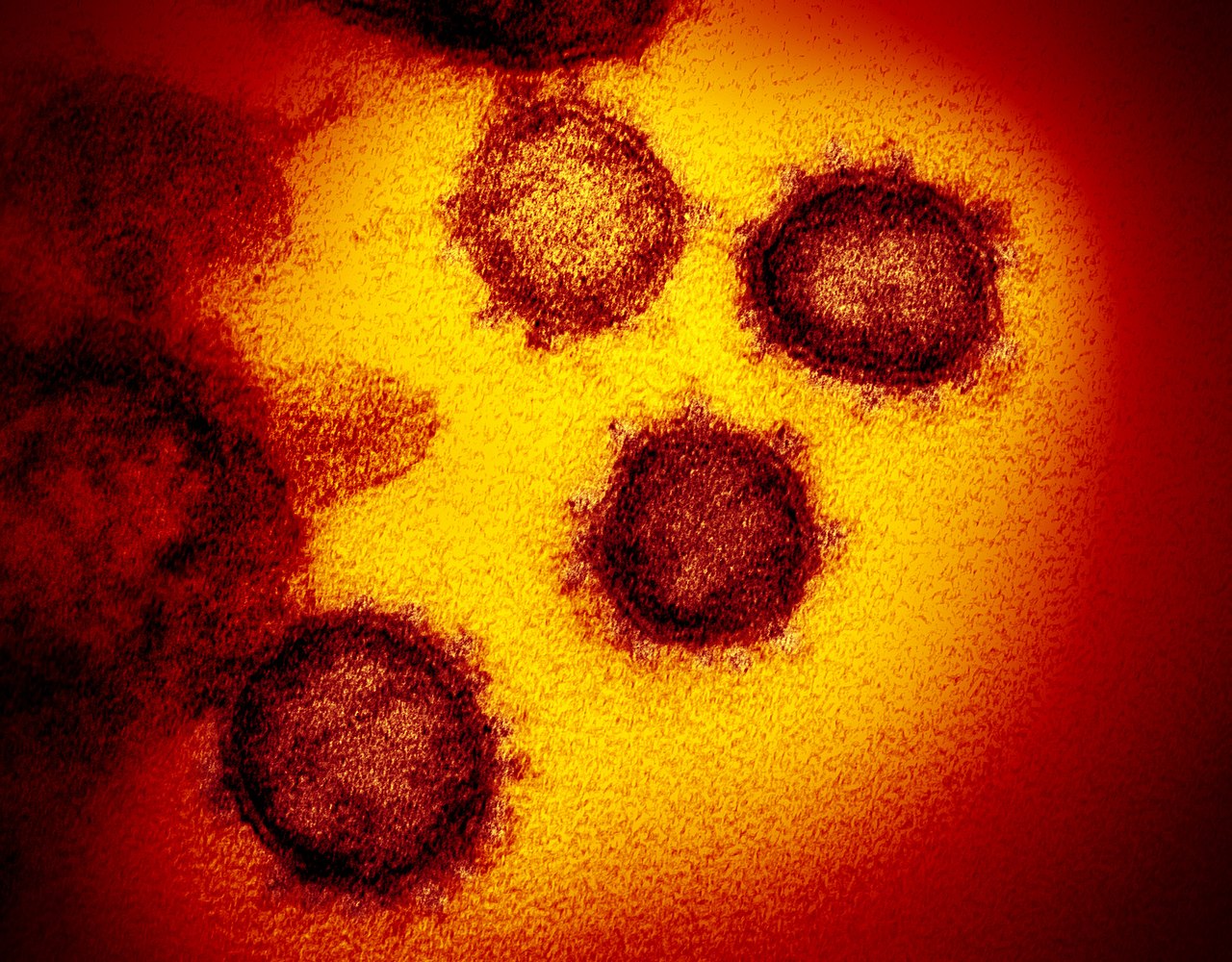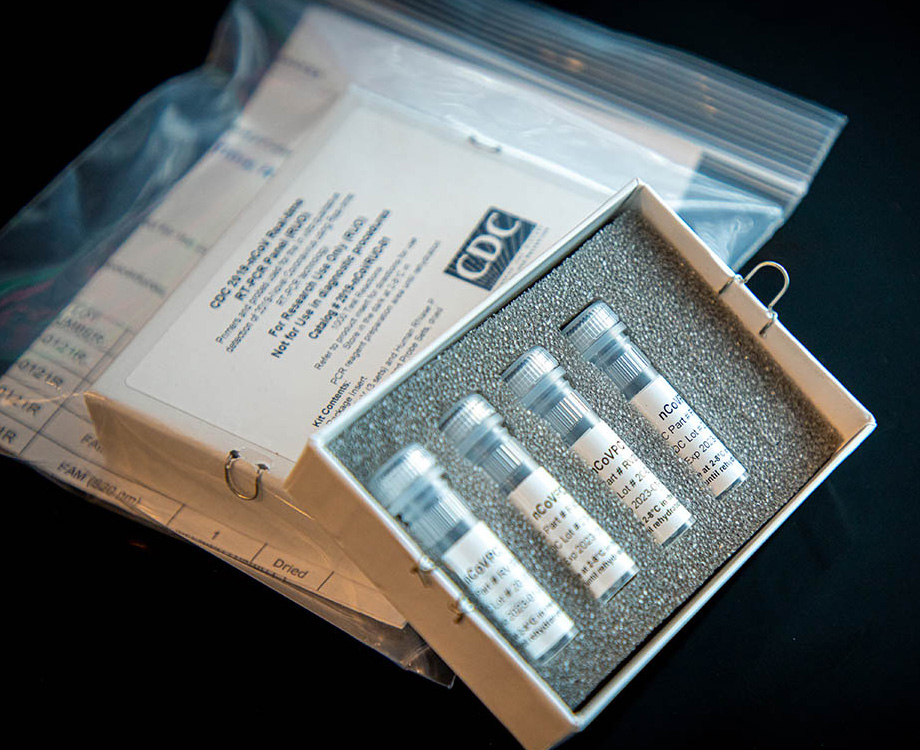COVID-19 is the name given to a new coronavirus disease that first appeared in Wuhan, China in December, 2019. Though the illness is similar to a cold for most people, in some cases it can cause severe illness or even death. The disease spread quickly to countries around the globe and has had a terrible impact worldwide.
The name “COVID-19” is short for “Coronavirus Disease 2019”. “COVI” stands for “coronavirus”, “D” is for “disease”, and the “19” represents the year the virus appeared.
Since COVID-19 first appeared, the disease has spread globally, leading to a pandemic that has affected millions and millions of lives.

(Source: NIAID-RML [CC BY-SA], via Wikimedia Commons.)
Coronaviruses
Coronaviruses are a family of viruses which have a spiky ring around them when viewed with a powerful microscope. This ring looks a little like a crown, or “corona”. Before COVID-19, only six coronaviruses were known to affect humans. Four of these cause mild illnesses like the common cold. The other two cause more serious lung illnesses, and can be deadly.
COVID-19 surprised scientists in several ways. At first it was thought that the disease couldn’t spread easily between humans. But that wasn’t true. It turns out that the disease spreads easily, and can even be passed by people who don’t show any signs that they are sick. This makes it much harder to control.
Though many people have died from the disease, most people who get it recover. For about 80% of the people who get the disease, the effects are mild – like a common cold. But the virus seems to be much more serious for older adults and people with other health problems. Children seem to be less affected than others, but they are not entirely safe from the virus.

(Source: US Centers for Disease Control [Public domain], via Wikimedia Commons.)
Vaccines and Treatments
Governments around the world have worked hard to limit the spread of the coronavirus.
Since the start of the pandemic, scientists worldwide have made incredible progress in understanding and fighting COVID-19. Vaccines were developed in record time and have been available since late 2020. These vaccines help prevent severe illness and have saved countless lives. Today, there are several vaccines approved for use in different countries.
There is still no cure for COVID-19, but many treatments have been developed to help those who become seriously ill. These treatments, along with the vaccines, have greatly reduced the number of severe cases and deaths.
This comic does a nice job of discussing the coronavirus in a clear way.

(Source: Penn State, via Flickr.com.)
Things You Can Do
To keep diseases like COVID-19 and the flu from spreading:
• Stay home if you’re sick
• Wear a mask in crowded places, especially indoors
• Stay a safe distance away from others – about 6 feet (2 meters)
• Cough into your elbow to prevent spreading germs
• Wash your hands well, and do it often.
• Once your hands are clean, try not to touch your nose, mouth, or eyes.
Doctors suggest washing for at least 20 seconds, which is about as long as it takes to sing the song “Happy Birthday” twice.
NewsForKids.net also has these COVID-19 resources:
• Collection of our articles on COVID-19
• Coronavirus Words Explained
